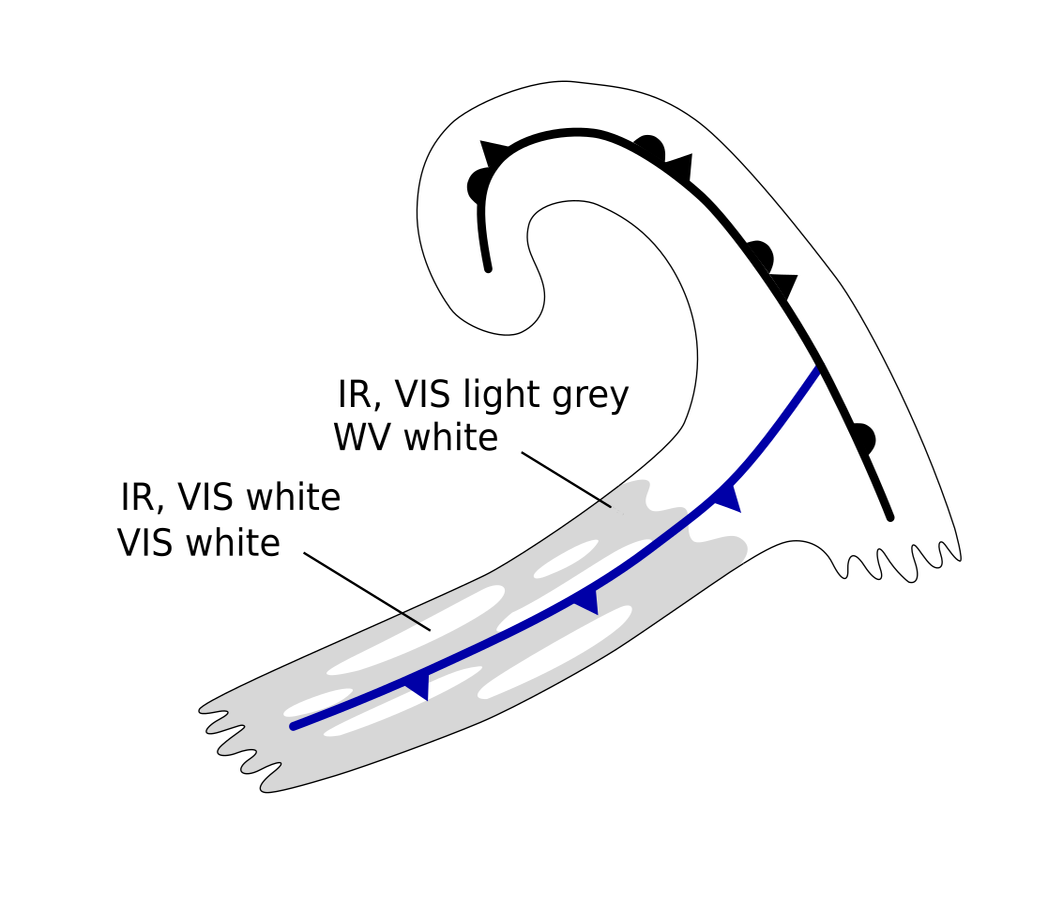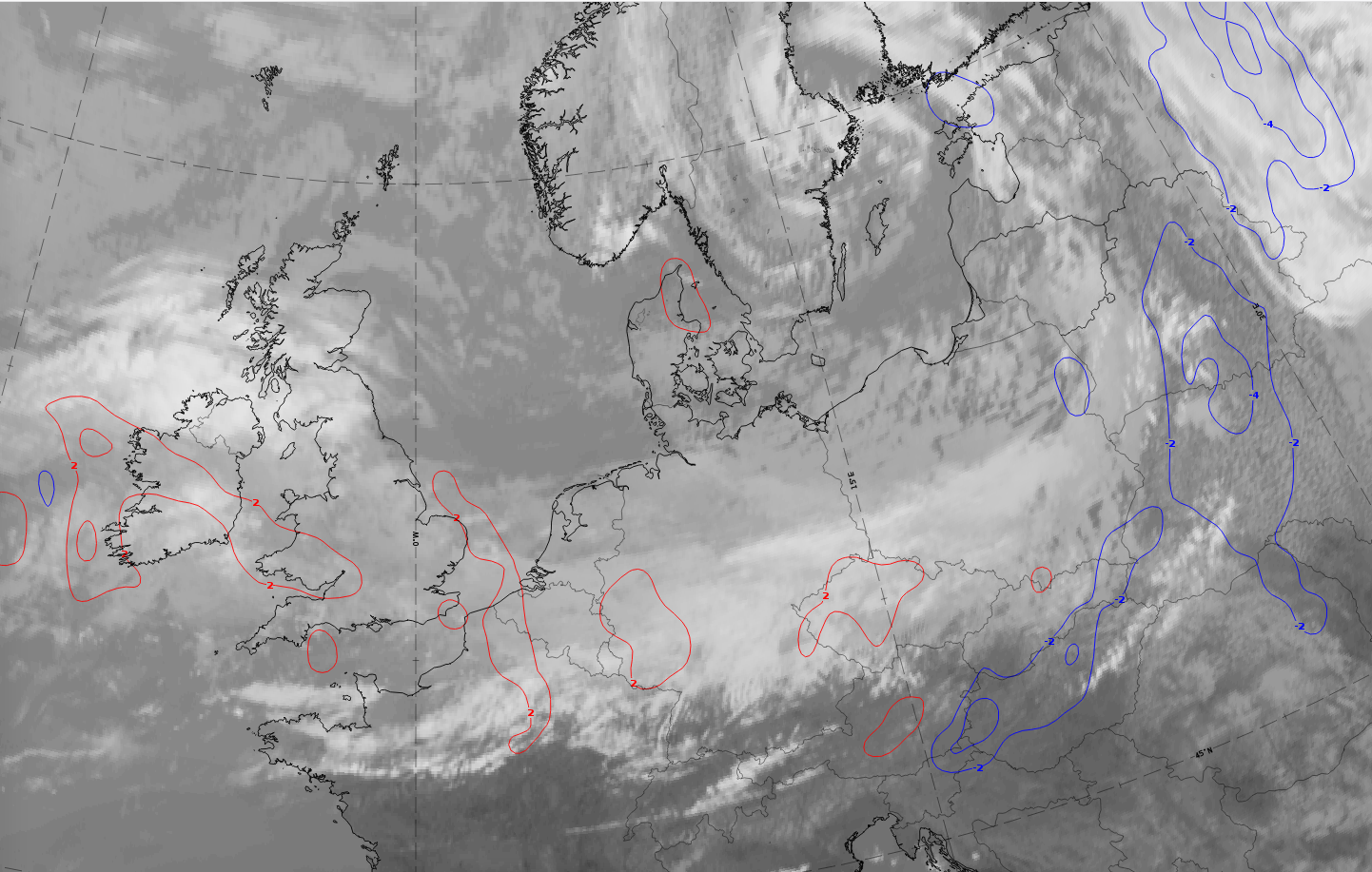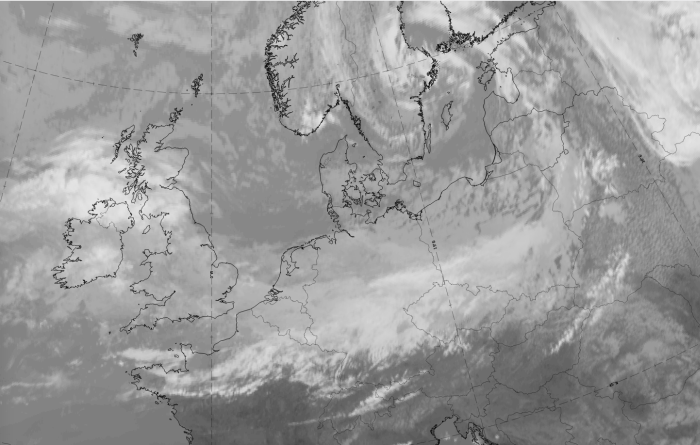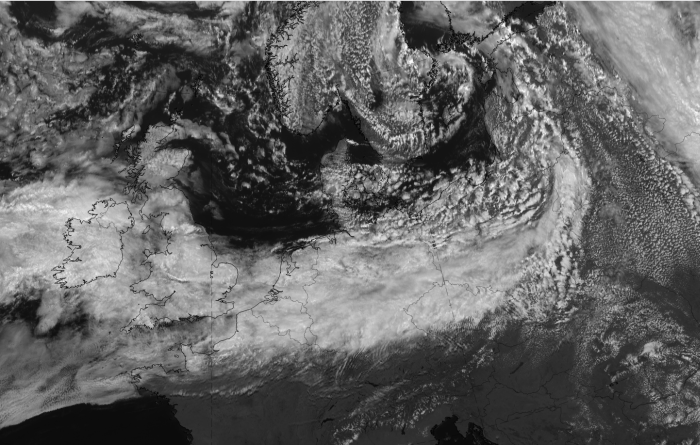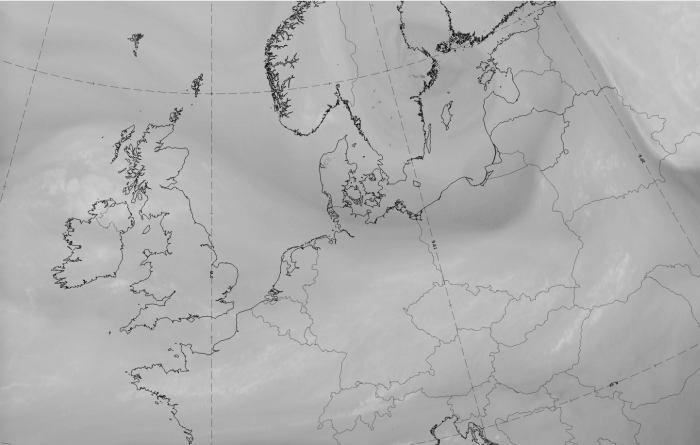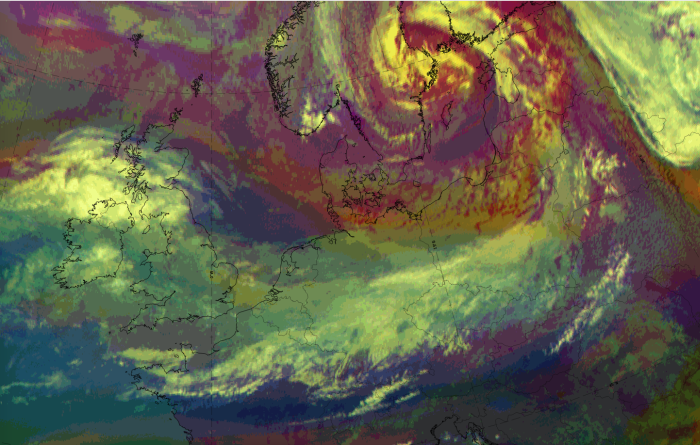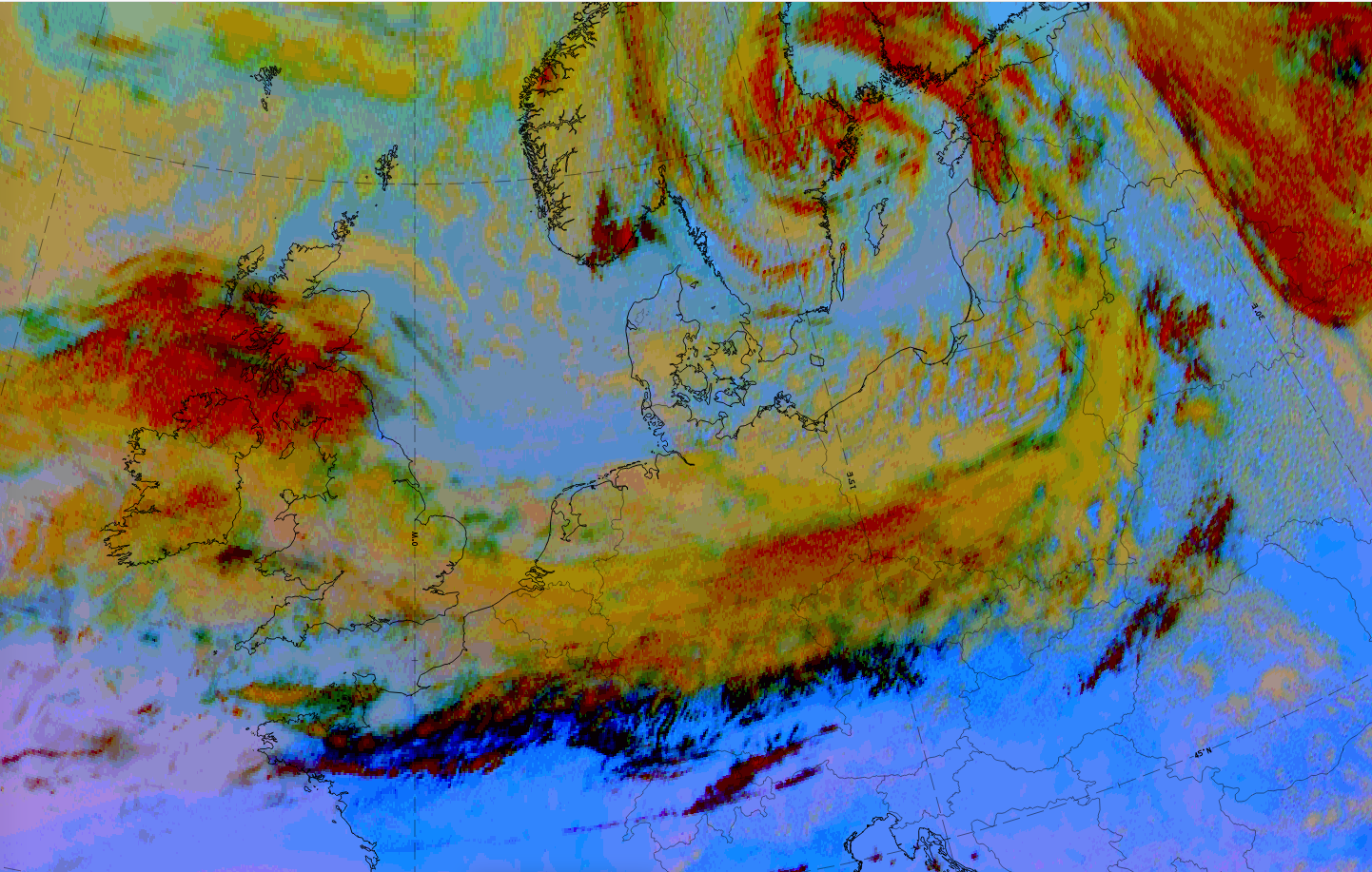Cloud Structure In Satellite Images
Cold Fronts are usually associated with cold advection behind the frontal zone, but there are cases, where there is also warm advection within and behind the frontal zone, albeit usually weak. These are called Cold Fronts in Warm Advection, abbreviated CF in WA.
45 cases of CF in WA have been investigated here.
In satellite imagery the cloud bands of CF in WA generally look similar to Cold Fronts, but they are often weaker: roughly one third of such cloud bands consist only of low clouds, and almost half of them are more fibrous and broken than Cold Fronts.
As with a Cold Front in Cold Advection, a CF in WA can be a whole front, or a part of it (the rest of the front being either a classical Cold Front or a CF in CA).
CF in WA forms, when a Cold Front encounters warm air advection related to an another approaching system. This happens most often, when a new wave forms within a Cold Front.
Appearance in the basic channels:
- In VIS images: a light grey cloud band with some broken structure
- In IR images: a grey, broken cloud band, which is clearly darker than other frontal parts of the system
- In WV images: a grey band of high WV content with a shart boundary at the rearward edge
Appearance in the basic RGBs:
Airmass RGB
In the Airmass RGB the cloud band has a very similar appearance to that in the IR image. However, the area of the frontal band where clouds have dissolved appears in blue, sometimes greenish, colours, having the same width and configuration as in the WV channel. Consequently, this area mostly much broader than the cloud band and greenish colours indicate the warmer airmass approaching from the west and south-west.
Behind the distinct rearward edge, brownish colours indicate the approaching cold and dry air from the north and north-west.
Dust RGB
The surroundings of the Cold Front in Warm Advection cloud band are usually blue where there is cloud free ground. Ochre cloud patches, representing mid-level cloud, or pinkish areas, representing very dry air above the cloud-free ground, can occur within the blue area depending on the individual case.
The cloud band of the Cold Front in Warm Advection consists largely of ochre colours where there are only low and mid-level clouds, and dark-red colours, representing thick cloud with ice droplets, where higher cloud fibres have remained.
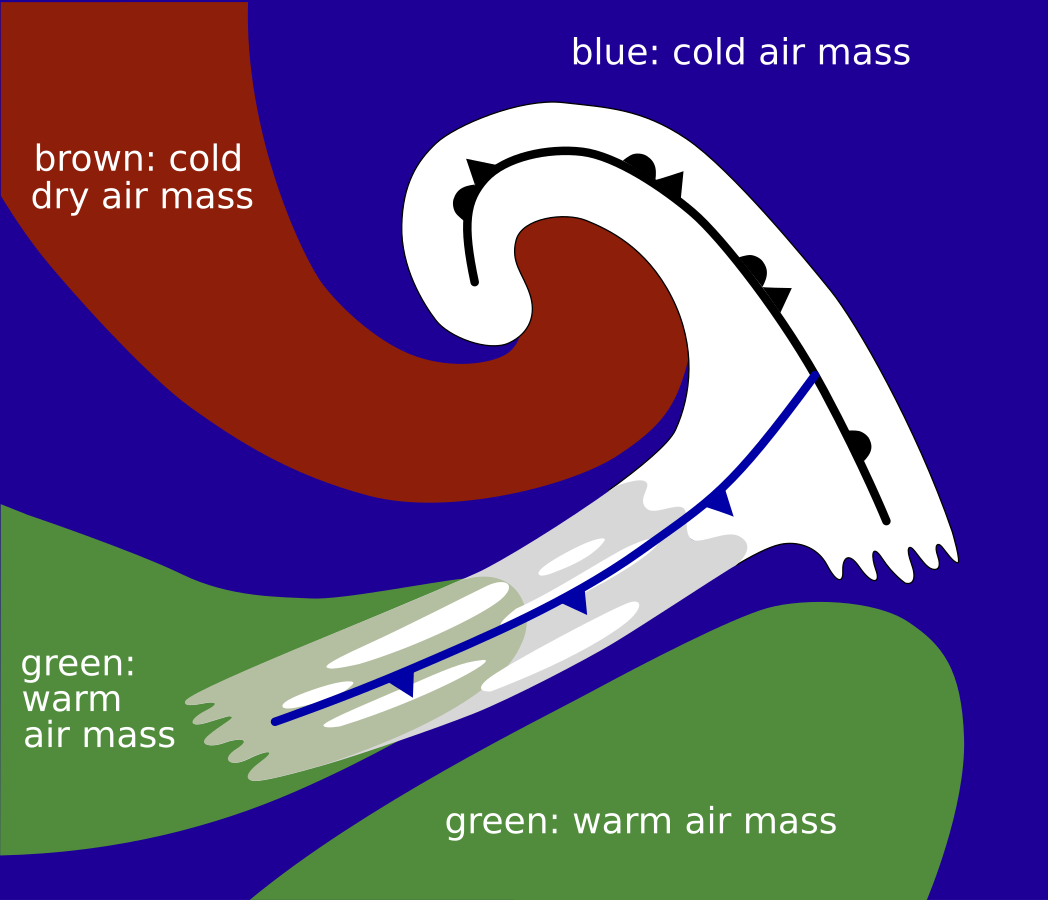 |
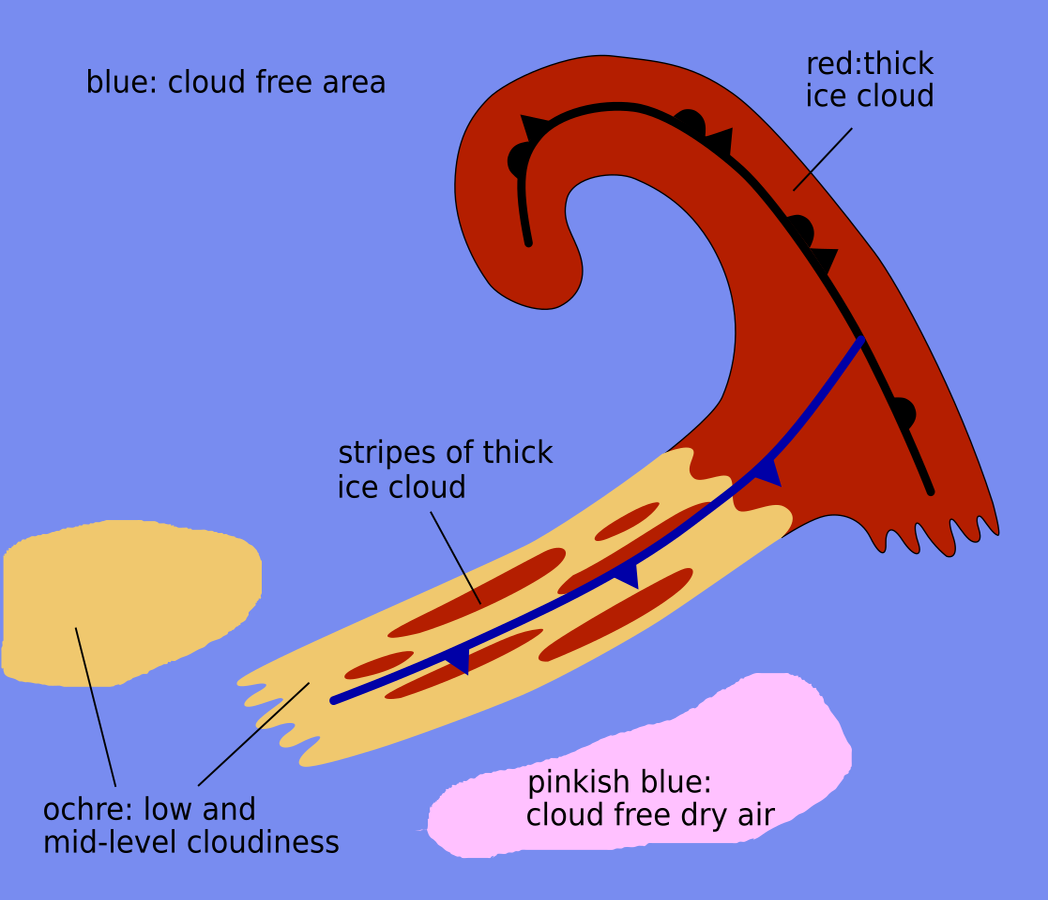 |
Legend: Basic RGB schematics.
Left: Airmass RGB; right: Dust RGB.
A case from 8 July 2020 at 12 UTC shows a typical example of a cloud band of a Cold Front in Warm Advection, which extends from western Europe across Germany and the Czech Republic to southern Poland. Over the British Isles, the cloud shield of a warm front can be observed. This system is thought to be responsible for the warm advection.
8 July 2020, 12UTC: IR with temperature advection at 700 hPa superimposed; red: warm advection; blue: cold advection.
|
|
|
|
8 July 2020, 12UTC: 1st row: IR (above) + HRV (below); 2nd row: WV (above) + Airmass RGB (below); 3rd row: Dust RGB + image gallery.
*Note: click on the image to access the image gallery (navigate using arrows on keyboard).
| IR | Light grey with white stripes at the rear edge. |
| HRV | White at the leading part in the south and grey at the rearward part. |
| WV | Broad white band with a dark grey stripe to the north. |
| Airmass RGB | Clouds in white with a greenish shadow above, especially in the western parts where warm airmasses are advected. A dark-brown stripe to the north, corresponding to the dark grey stripe in the WV image. |
| Dust RGB | Some black translucent ice clouds at the leading edge. Ochre colours within the cloud band at the rear side. Dark-red stripes representing the thicker ice clouds. |
A case from 19 to 20 April 2020, shown in a 6-hourly sequence, illustrates two typical processes for a Cold Front in Warm Advection: warm air is advected into the circulation of the occlusion development from the rear side, and this warm advection leads to the dissolution of the former cold front cloud band.
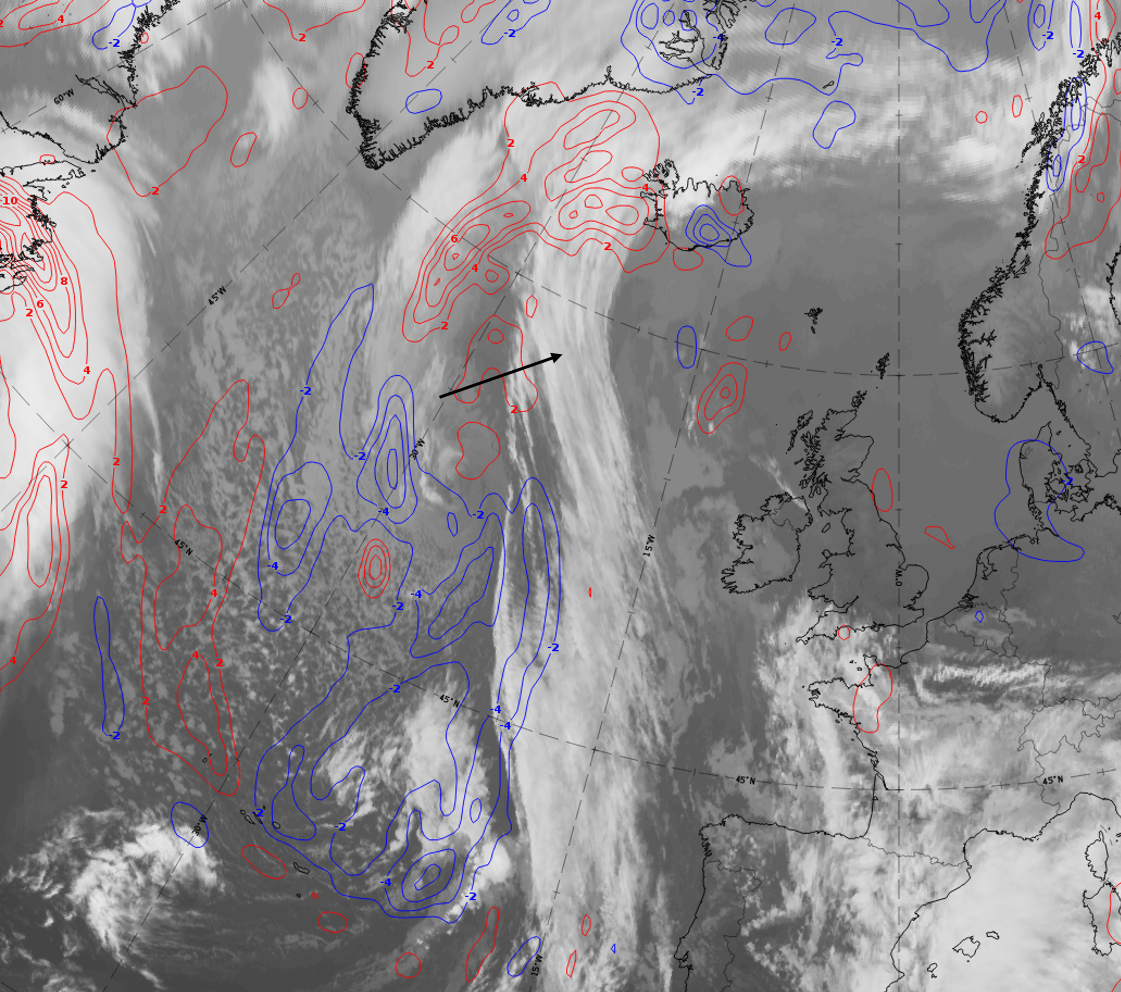 |
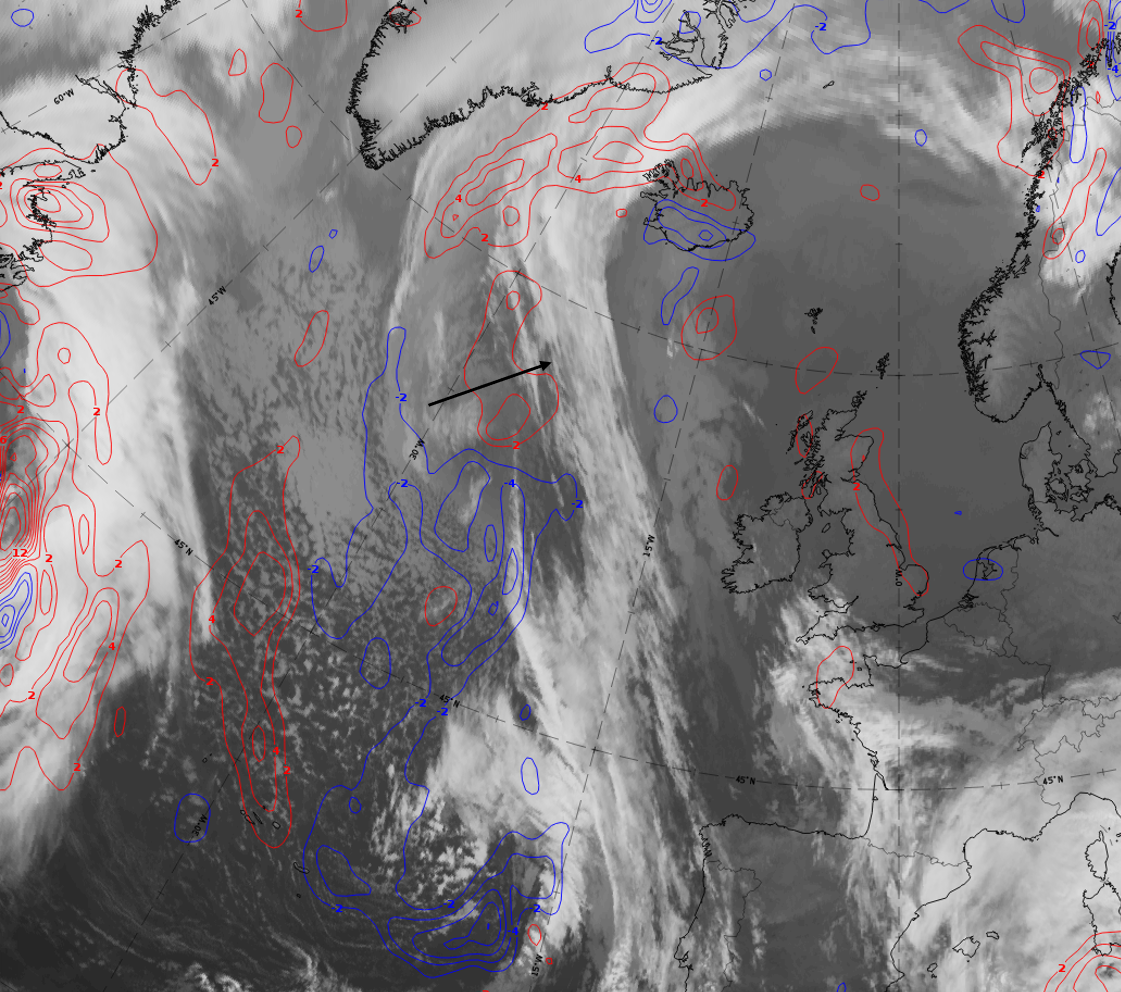 |
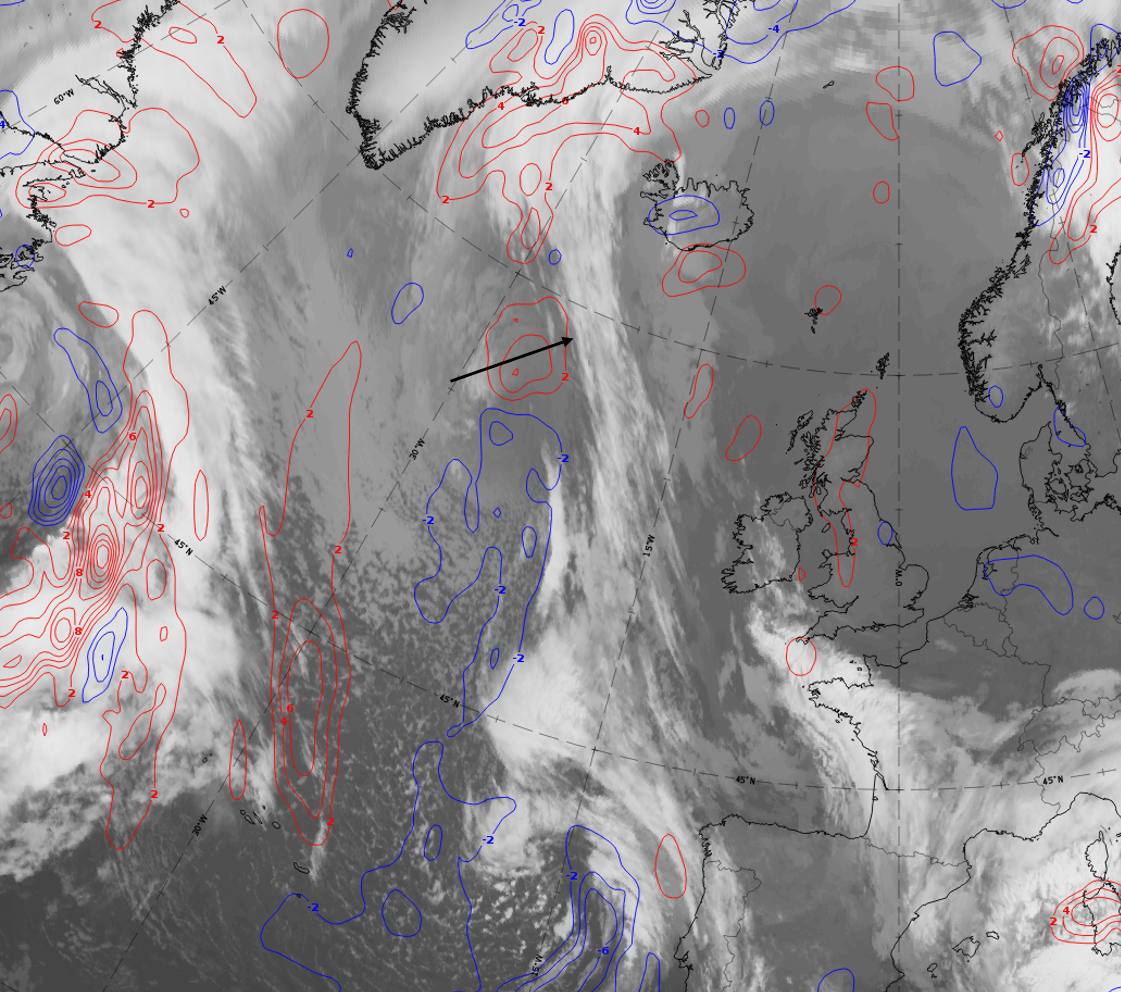 |
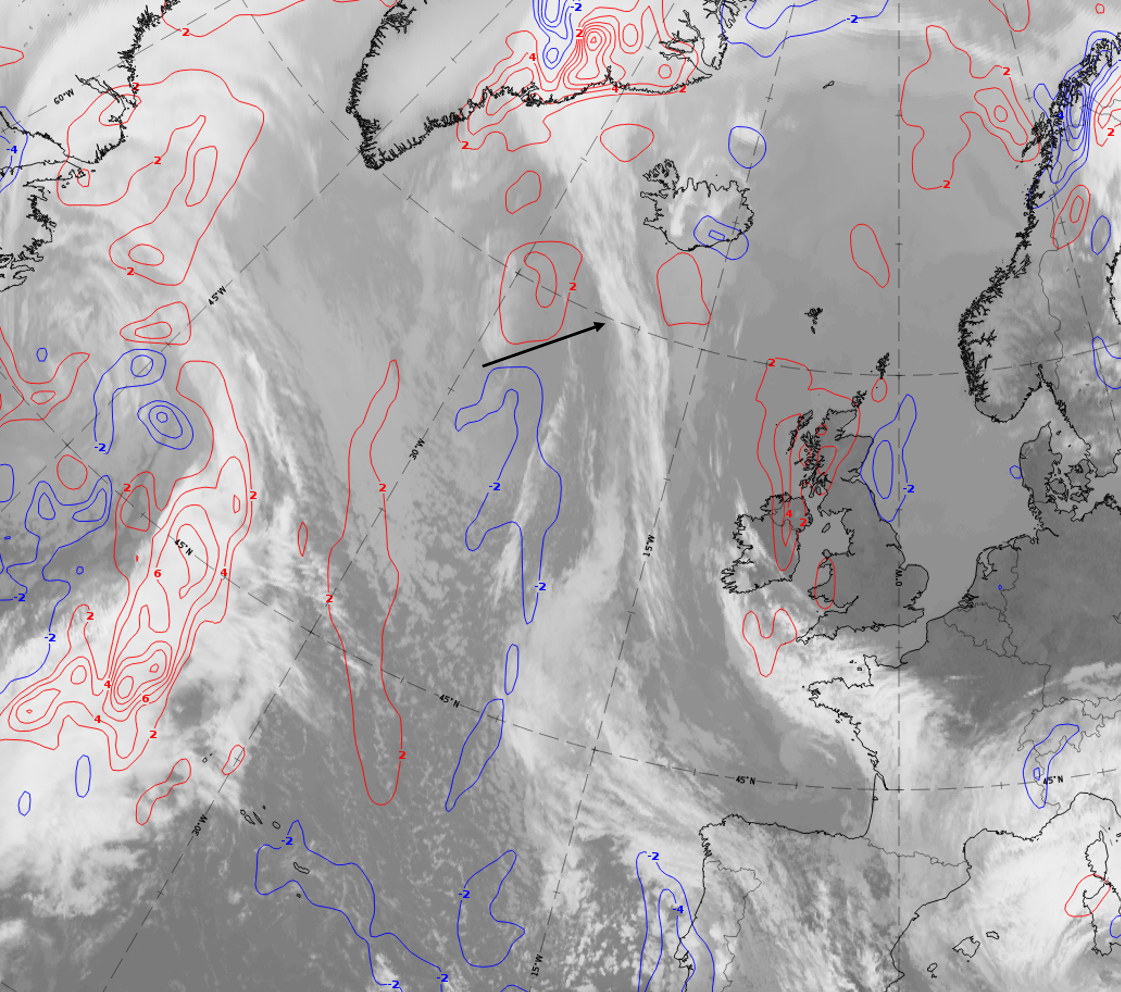 |
19 - 20 April 2020: 6-hourly sequence. The Cold Front in Warm Advection is indicated by an arrow.
u.l.: 19 April at 18 UTC; u.r.: 20 April 00 UTC; l.l: 20 April 06 UTC; l.l.: 20 April 12 UTC.*Note: click on the image to access the image gallery (navigate using arrows on keyboard)
